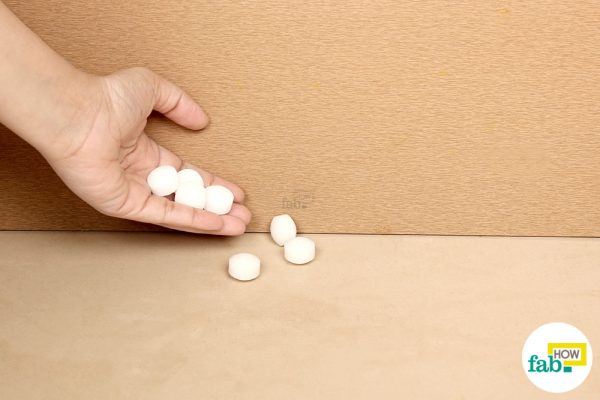
Cute and cuddly, mice love to share your house with you. If you love critters, you may have no problem leaving them be. That’s until you see them scampering around in your toilet. Knowing it’s very unlikely that they clean themselves before venturing into your kitchen, it’s time to say goodbye to these rodents.
Mice, rats and many other rodent pests are naturally nocturnal. Owing to their ever-growing teeth, most of them have adapted to be voracious nibblers. The damage caused by rodents is relentless.
Although the life span of a wild mouse is just one year, they are rapid reproducers who start mating at the tender age of six weeks. They can bear up to a dozen litters in their lifetime, and each offspring in turn can have up to a dozen litters.
Exterminating mice and rats using poison is extremely cruel. Poisoned rodents not only die slowly and painfully but are also a threat to predators that may consume the dead poisoned bodies.
There are more humane ways to get rid of mice and rats – without using poison and killing them. Knowing what makes these critters tick can render your job a lot easier.
Mice and rats are creatures of habit, which makes them quite predictable. Wherever a mouse goes, it leaves behind a trail of pheromones that other mice will follow. These pathways and trails remain unchanged and are marked by feces and urine, the latter of which leaves the pheromone scent-trail.
Just using natural repellents may not be enough. Following a strategy is the most important thing when it comes to keeping mice away from the house. Blocking their entry into the house is very important. Traps and repellents are the most effective when used in the right places – along the walls and edges, and behind heavy furniture and electrical appliances like refrigerators and ovens that are rarely moved.
The trails and pathways are the areas with the most rodent activity and where you’re more likely to get success. If you’re unsure where they are, you can cover an area with talcum powder to find their tracks. Their footprints may lead you to their entry point and indoor hiding place.

Here are five safe poison free methods that can be used to rid your house of mice.
Contents [hide]
Method 1: Using Peppermint Essential Oil
Mix the ingredients in a spray bottle and use
Method 2: Using Mothballs
Place mothballs around the house to keep mice at bay
Method 3: Using Cayenne Pepper Spray
Step 1. Add cayenne pepper and chili flakes to hot water
Step 2. Strain the mixture
Step 3. Use the homemade pepper spray to repel mice
Method 4: Using Glue Traps and Jail Traps
Method 5: By Blocking the Entry Points
Additional Tips
Share this:
More For You
Method 1: Using Peppermint Essential Oil
Pleasant as it may smell to you, mice and other rodents are positively repelled by the scent of peppermint. That’s because the smell of the oils present in peppermint is extremely offensive, irritating and overwhelming to the heightened olfactory senses of mice.
You can easily make a spray to repel the mice from coming near your dwelling and discourage them from entering your house. A dish soap solution makes the base of the spray. The soap molecules attach themselves to the essential oil molecules, dispersing the oil throughout the solution.
Things you’ll need:

Peppermint essential oil – 5 or 6 drops
Dish soap – 1 tablespoon
Water – 1 cup
Mix the ingredients in a spray bottle and use

Pour 1 cup of water into a spray bottle through a funnel to prevent any spills.
Add 1 tablespoon of dish soap to the spray bottle through the funnel.
Add in about 5 or 6 drops of peppermint essential oil to the spray bottle.
Close the spray bottle and give it a couple of shakes to thoroughly mix the ingredients.
Spray this peppermint oil solution in and near your house to repel mice. Cover all the strategic areas like mice holes, their entry points and the places they like to frequent like rafters near the roof, attics and basements.

Method 2: Using Mothballs

Mothballs act as an effective rodent repellent. One reason for that is the same as peppermint oil. They utterly dislike the smell! Another reason is the presence of naphthalene in mothballs.
When ingested or inhaled, naphthalene deprives the blood of its ability to carry oxygen, thus it can be toxic to the rodents to the point that they’ll avoid it at any cost. Caution should be observed while handling mothballs to avoid any potential harm to yourself.
Mothballs are toxic, so keep them away from pets and kids as they can be potentially life-threatening to them. When using mothballs to deter mice, you need to place them around the house in such a way that they remain inaccessible to small children and pets, as both can be voracious explorers.
Since cats can reach most of the places in your home, you should avoid using mothballs if you have a cat. However, if you do own a cat, you probably won’t have to worry about mice at all.
Place mothballs around the house to keep mice at bay

Place mothballs strategically around the house in the areas that see the most rodent activity. Focus on the areas frequented by the mice. You can identify the trails frequented by mice and rats by the presence of their feces and urine.





0 comments:
Post a Comment
Click to see the code!
To insert emoticon you must added at least one space before the code.